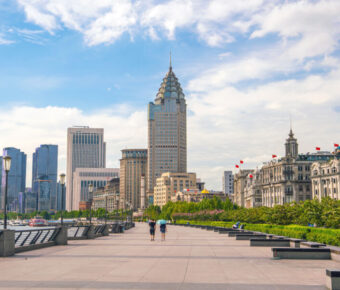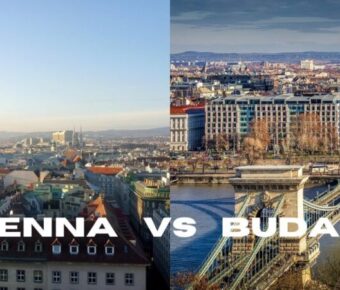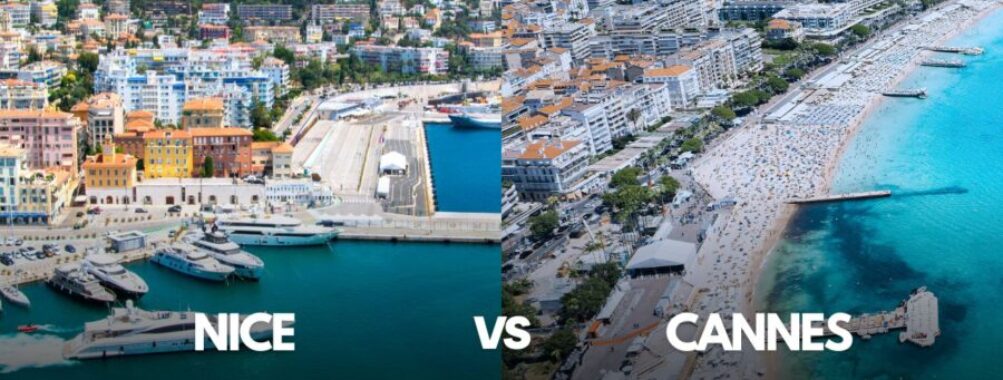
Nice vs Cannes: 5 Key Differences to Help You Choose Your Perfect French Riviera Destination
Are you trying to decide between Nice and Cannes for your French Riviera getaway? Both cities offer stunning Mediterranean views but cater to different types of travelers. Nice offers beauty, relaxation, and authentic experiences, with a more rustic and traditional culinary scene than Cannes’ polished international dining.
Nice has a special charm, great food, a beautiful beach, and interesting sights. Many travelers appreciate its overall vibe and convenient location.
The city feels more laid-back and genuine, making it perfect for those who want to experience local culture. You can easily take a bus from Nice to visit nearby gems like Eze.
On the other hand, Cannes is known for its sophistication and style. The beaches here are often described as more user-friendly, even featuring railings in the ocean for more leisurely swimming. While Nice offers authenticity, Cannes delivers a more polished experience that appeals to those seeking luxury and glamour on their French Riviera adventure.
Table of Contents
- Geography and Climate of Nice and Cannes
- Location on the French Riviera
- Comparative Climate Patterns
- Historical Overview of Nice and Cannes
- Cultural Evolution in Nice
- Cannes’s Development and the Film Festival
- Tourist Attractions and Sightseeing
- Nice’s Promenade des Anglais and Old Town
- Cannes’ Boulevard de la Croisette and Le Suquet
- Day Trips to Eze and St. Paul de Vence
- Beaches and Coastal Experiences
- The Beaches of Nice
- Cannes’ Sandy Shores
- Water Sports and Relaxation
- Accommodation and Stays
- Luxury Hotels and Boutique Options
- Value for Money Stays
- Culinary Scene and Dining Experiences
- High-End Restaurants and Local Delicacies
- Street Food and Casual Bites
- Nightlife and Entertainment
- Clubbing and Bars in Cannes
- Nice Evening Ambiance
- Transportation and Accessibility
- Public Transport and Walking Routes
- Car Rentals and Private Transfers
- Planning Your Itinerary
- Cultural and Sightseeing Itineraries
- Relaxation and Beach-Focused Trips
- Frequently Asked Questions
- What distinguishes the nightlife experiences between Nice and Cannes?
- How does the family-friendliness of Nice compare to that of Cannes for travelers with children?
- What are the cost differences for tourists considering a stay in Nice versus Cannes?
- In terms of travel distances, how far apart are Nice and Cannes, and what are the best modes of transportation between them?
- How do Nice and Cannes differ in their appeal to luxury travelers versus those seeking a cultural experience?
- In a Riviera itinerary, how could one decide between spending time in Nice, Cannes, or St. Tropez?
- Book Your Dream Experience
- More Travel Guides
Geography and Climate of Nice and Cannes
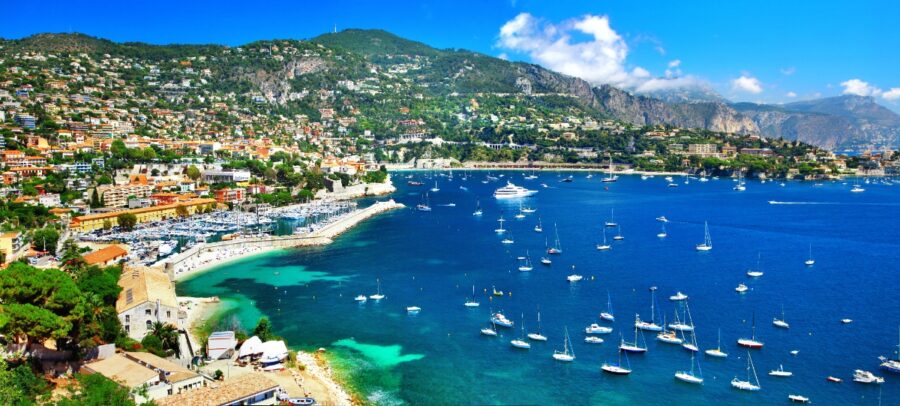
Both Nice and Cannes boast spectacular geographic settings along the French Riviera with distinctive Mediterranean climates that attract visitors year-round. Their positions along the azure coastline create unique microclimates that benefit from natural protection and seaside advantages.
Location on the French Riviera
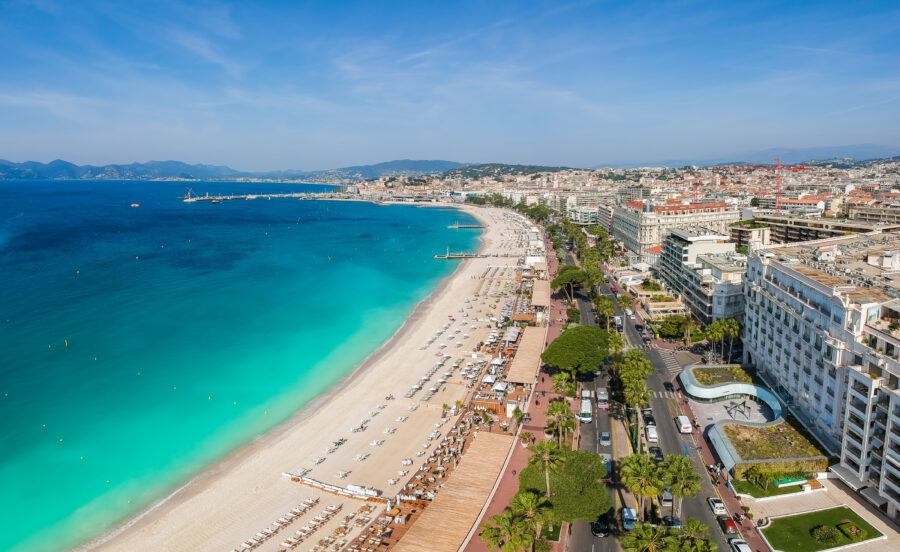
Nice sits in a natural amphitheater between the sea and surrounding hills that shelter the city. It’s positioned in the eastern part of the French Riviera, just 20 miles from the Italian border. The city spreads between the Mediterranean Sea and the foothills of the Alps, giving it a dramatic backdrop.
Cannes is located about 20 miles southwest of Nice. It stretches along a more open bay with the Massif de l’Esterel mountains protecting it behind. The city faces south toward the Mediterranean, creating its famously photogenic waterfront setting.
Both cities feature beautiful bays and beaches, though Nice’s coastline is primarily pebbly while Cannes offers more sandy beaches. Their strategic positions have historically made them important Mediterranean ports and later, premier resort destinations.
Comparative Climate Patterns
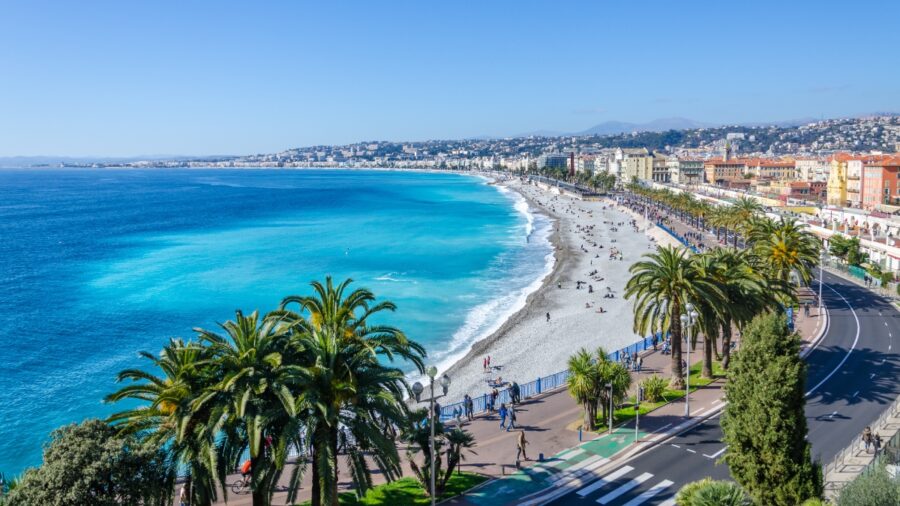
Nice enjoys what locals call a “Mediterranean climate with a difference.” The surrounding hills create a protective barrier that shields the city from harsh winds. This results in mild winters with temperatures rarely dropping below 5°C (41°F) and warm, sunny summers averaging around 27°C (80°F).
Cannes experiences a classic Mediterranean climate with hot, dry summers and mild winters. Summer temperatures typically range from 25-30°C (77-86°F), while winter temperatures stay comfortable at around 12°C (54°F) during the day.
Both cities benefit from abundant sunshine, approximately 300 sunny days annually. Rainfall is concentrated mainly in October and November, while the rest of the year remains dry. The sea temperature is inviting from May through October, making both destinations perfect for extended swimming seasons compared to other European beach resorts.
Historical Overview of Nice and Cannes
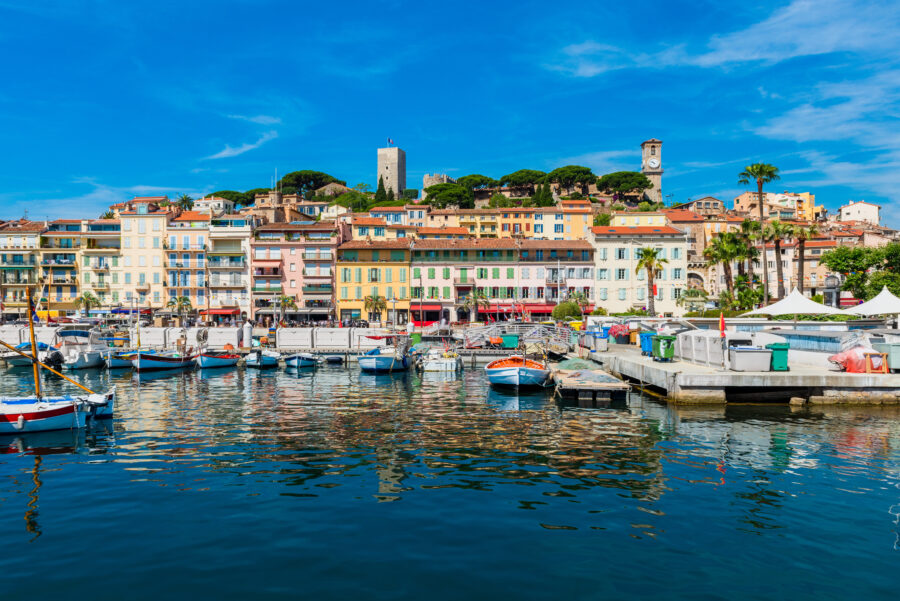
These two Mediterranean jewels have fascinating histories that shaped them into the glamorous destinations we know today. Both cities evolved from humble fishing villages to internationally renowned resort towns, attracting millions of visitors yearly.
Cultural Evolution in Nice
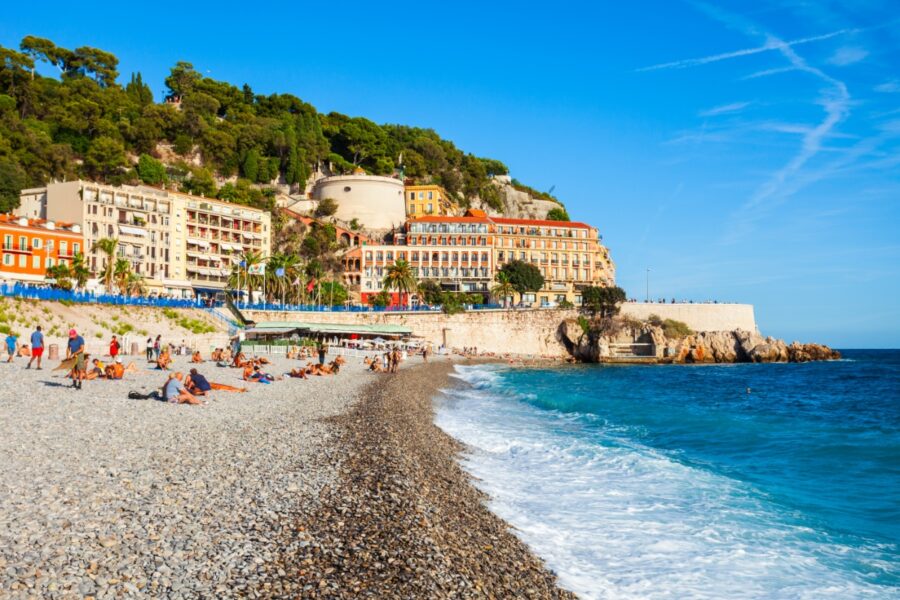
Nice has a rich and complex past that dates back thousands of years. The city was part of Italy until 1860, when it was transferred to France. This Italian heritage is still visible in the charming narrow streets of Old Town (Vieux Nice) and in the local dialect that blends French and Italian influences.
In the mid-19th century, Nice transformed from a quiet Mediterranean outpost into a fashionable winter retreat for European aristocracy. Queen Victoria was among its notable fans, spending many winters here and helping to popularize the destination.
The famous Promenade des Anglais (Walkway of the English) got its name from the English tourists who funded its construction in the 1820s. By the early 20th century, Nice had established itself as a cultural center with numerous museums and a vibrant arts scene.
Cannes’s Development and the Film Festival
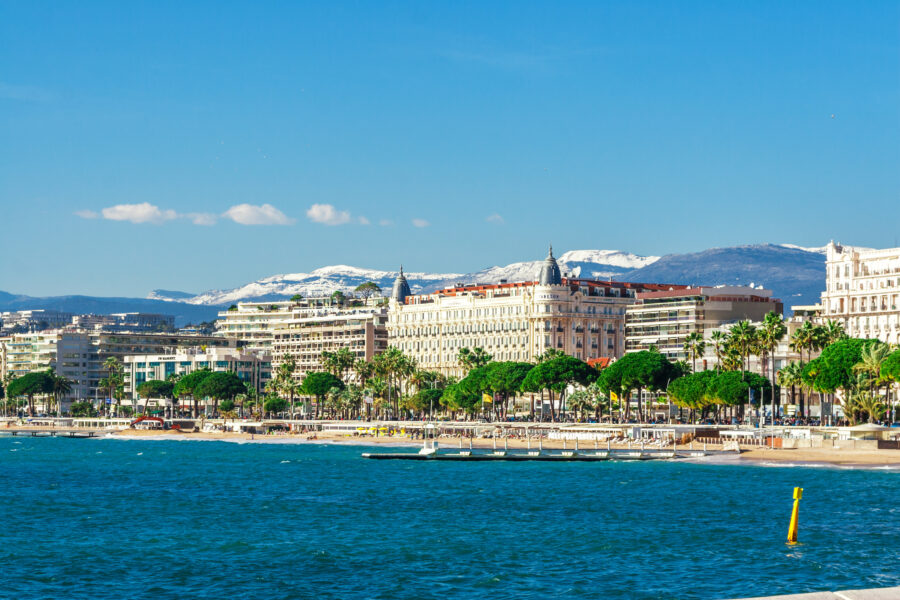
Cannes was once a modest fishing village until Lord Brougham, a British aristocrat, stumbled upon it in 1834 while trying to reach Nice. Enchanted by its beauty, he built a villa and spread the word about this hidden gem on the French Riviera.
By the late 19th century, Cannes had blossomed into a resort for the wealthy, with luxurious hotels sprouting along its coastline. The iconic Boulevard de la Croisette emerged as the place to see and be seen.
The turning point in Cannes’s history came in 1939 with the first Cannes Film Festival. Though interrupted by World War II, the festival resumed in 1946 and forever transformed the city’s identity. What started as a response to fascist interference in the Venice Film Festival has grown into the world’s most prestigious film event, bringing global celebrities to Cannes every May since.
Tourist Attractions and Sightseeing
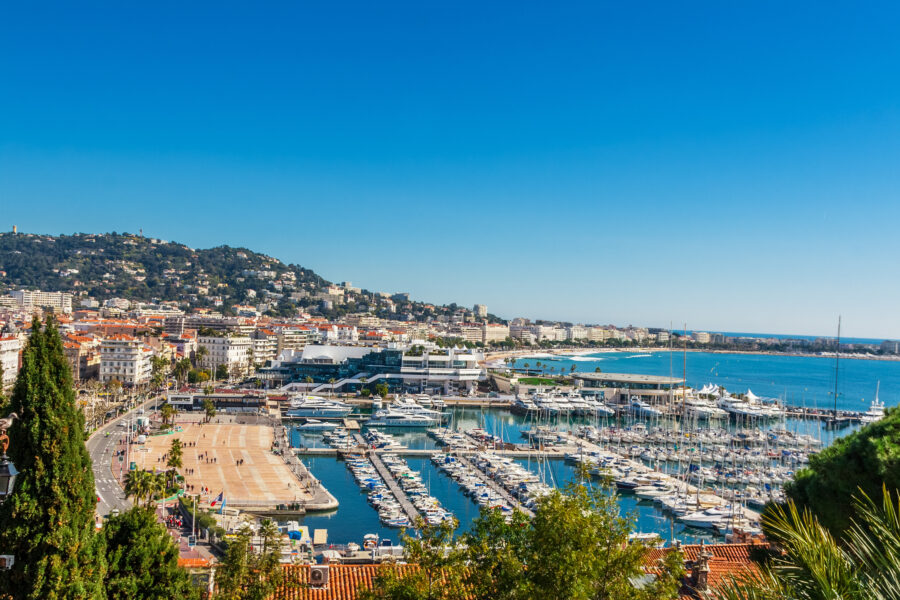
Both Nice and Cannes offer stunning attractions that showcase the best of the French Riviera. From historic old towns to glamorous promenades, each city presents unique sightseeing opportunities that appeal to different types of travelers.
Nice’s Promenade des Anglais and Old Town
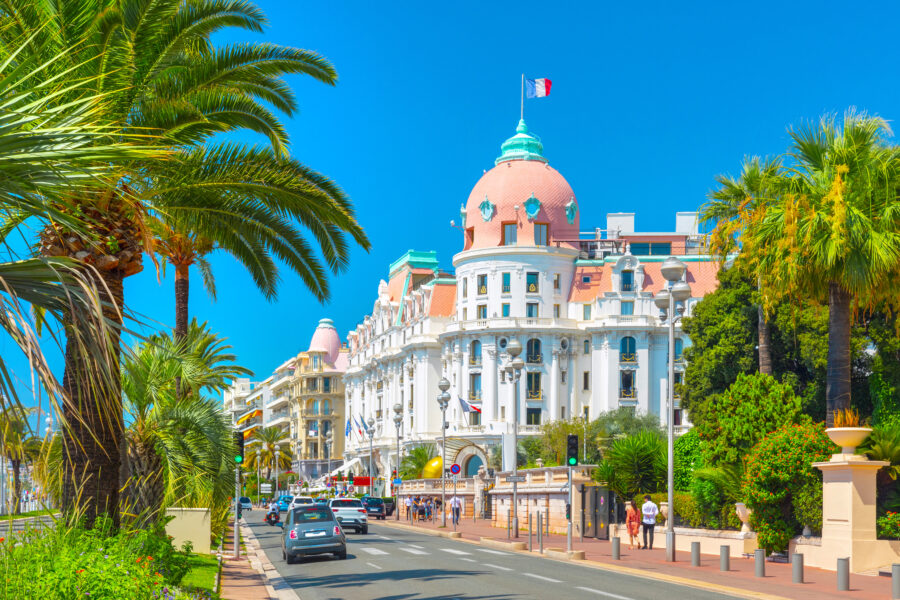
The Promenade des Anglais is Nice’s crown jewel – a stunning 7km walkway that hugs the azure Mediterranean coastline. This iconic boulevard is perfect for people-watching, morning jogs, or sunset strolls. You’ll find locals rollerblading alongside tourists taking photos of the famous blue chairs that line the promenade.
Nice’s Old Town (Vieux Nice) feels worlds away from the modern promenade. Its narrow, winding streets are filled with colorful buildings, small shops, and local restaurants serving Niçoise specialties. The flower market at Cours Saleya bursts with color and fragrance every morning except Mondays.
Don’t miss climbing Castle Hill for the best panoramic views of Nice’s red-tiled rooftops and bay. While the castle no longer exists, the park offers shady respite and photo opportunities that capture the essence of the Côte d’Azur.
Cannes’ Boulevard de la Croisette and Le Suquet
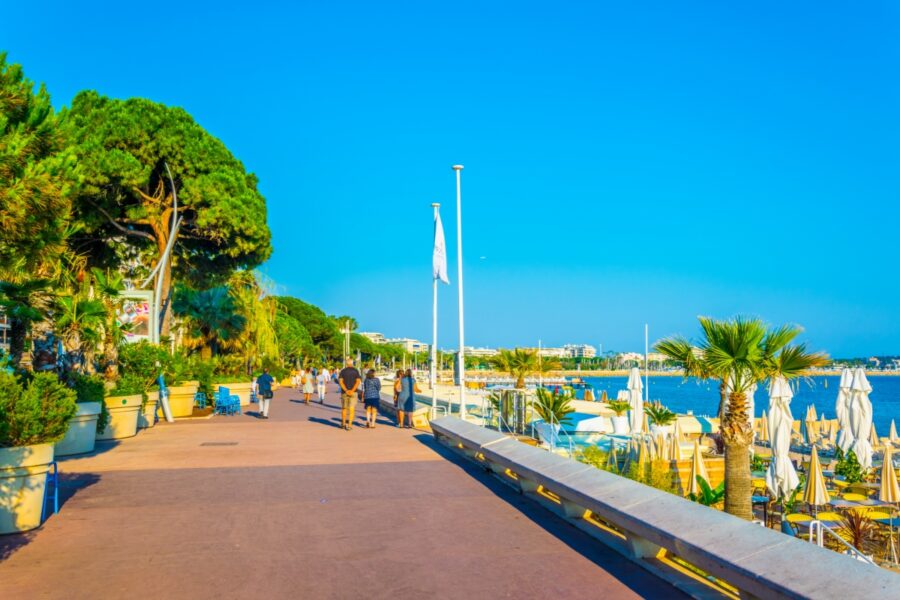
Cannes’ Boulevard de la Croisette epitomizes French Riviera glamour. This palm-lined promenade stretches about 2km along the seafront, showcasing luxury hotels, designer boutiques, and sandy beaches. Look for the famous handprints of movie stars outside the Palais des Festivals, where the renowned film festival occurs.
Le Suquet, Cannes’ Old Town, offers a charming contrast to the glitz below. Perched on a hill, this historic neighborhood features narrow cobblestone streets that wind upward to Église Notre-Dame d’Espérance. From this 16th-century church, you’ll enjoy breathtaking panoramic views of the city, bay, and Lérins Islands.
The Old Port (Vieux Port) sits at the foot of Le Suquet. It is filled with fishing boats alongside luxury yachts. In the evening, the area comes alive with seafood restaurants and cafés, perfect for watching the sunset over the water.
Day Trips to Eze and St. Paul de Vence
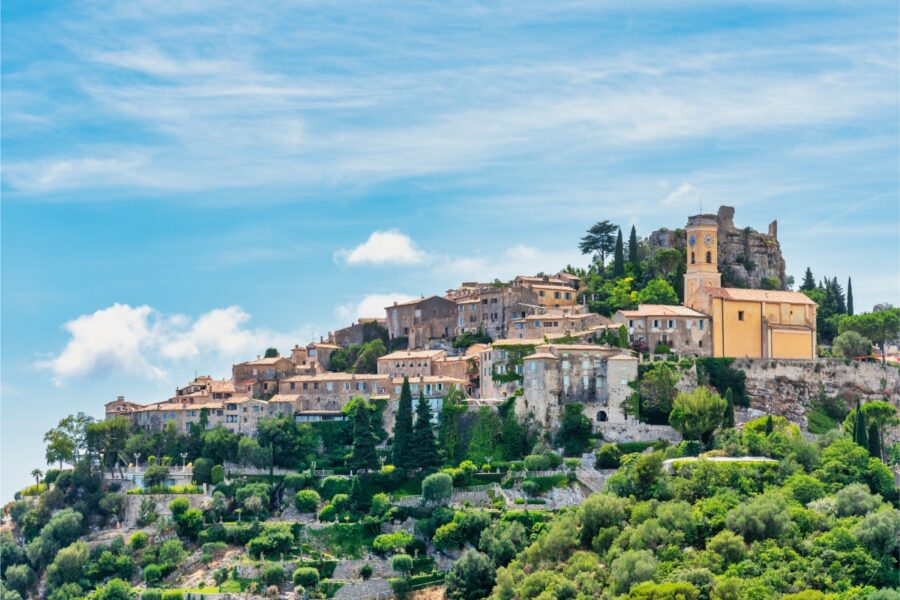
Eze, a medieval village perched dramatically on a rocky peak, is an unforgettable day trip from Nice or Cannes. This eagle’s nest village offers jaw-dropping Mediterranean views and well-preserved stone buildings. The exotic Jardin d’Eze showcases cacti and tropical plants along clifftop paths.
St. Paul de Vence, about 30 minutes from Nice, is one of the oldest medieval towns on the French Riviera. This walled village has become a haven for artists, with numerous galleries lining its picturesque streets. The Fondation Maeght museum displays impressive modern art in a beautiful setting.
Both villages offer authentic French dining experiences in romantic settings. The bus ride from Nice to Eze provides spectacular coastal scenery, while the journey to St. Paul de Vence takes you through the rolling hills of Provence.
See Related: Breathtaking Best Beaches in Europe (With Hidden Gems!)
Beaches and Coastal Experiences
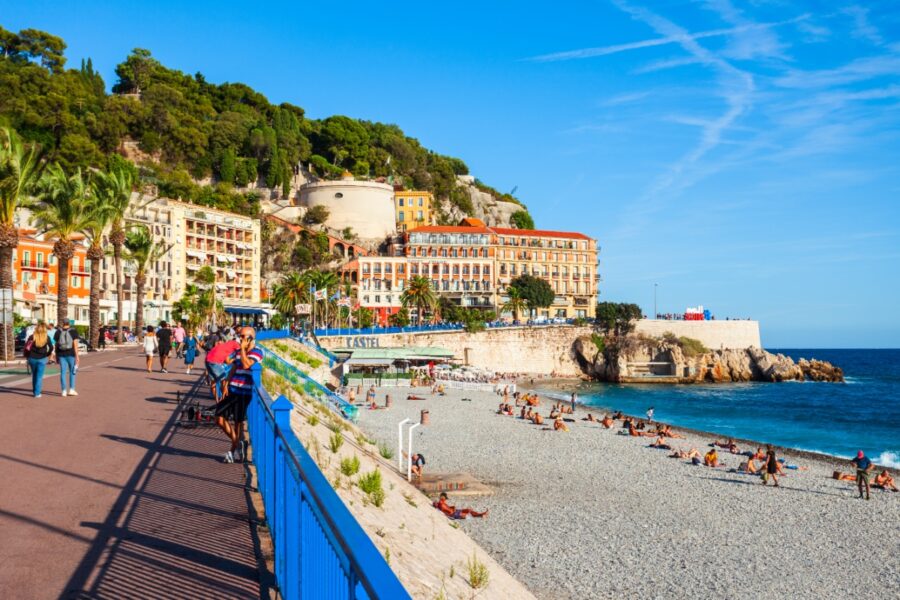
The French Riviera offers two distinctly different coastal experiences in Nice and Cannes. While both cities face the stunning blue Mediterranean, their beaches have unique characteristics that might influence your vacation choice.
The Beaches of Nice
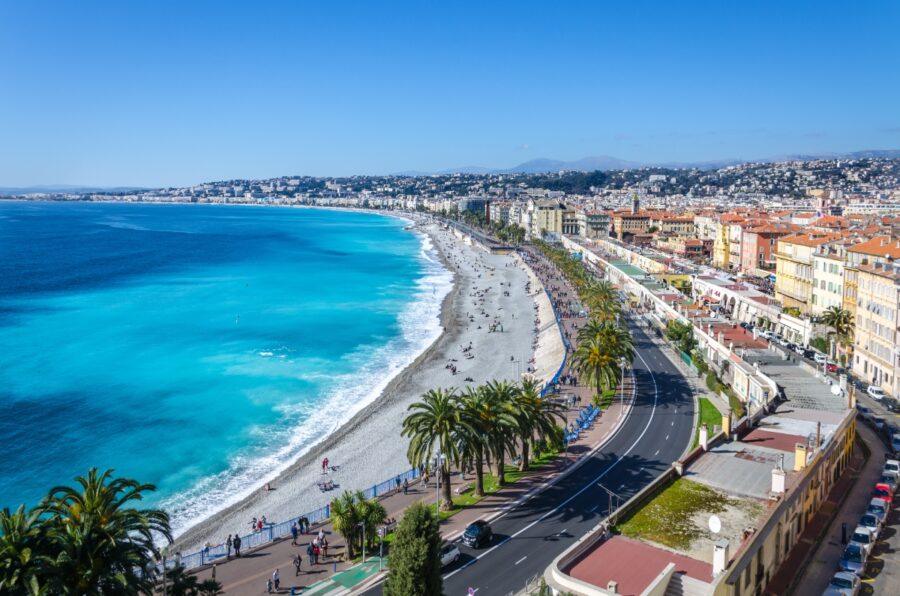
Nice’s beaches are famously pebbly rather than sandy. Locals’ smooth stones (called “galets”) line the 4-mile Promenade des Anglais, creating a distinctive, quintessentially Nice coastline.
While walking on these pebbles takes some getting used to, many visitors bring special beach shoes to make it more comfortable. The upside? You won’t take half the beach home in your bags or shoes!
Most beaches in Nice are public, though there are some private sections where you can rent loungers and umbrellas. The water is crystal clear and gorgeous turquoise, perfect for summer swimming. Pro tip: The pebbles slope steeply into the water, so be careful when entering the sea, especially with children.
Cannes’ Sandy Shores
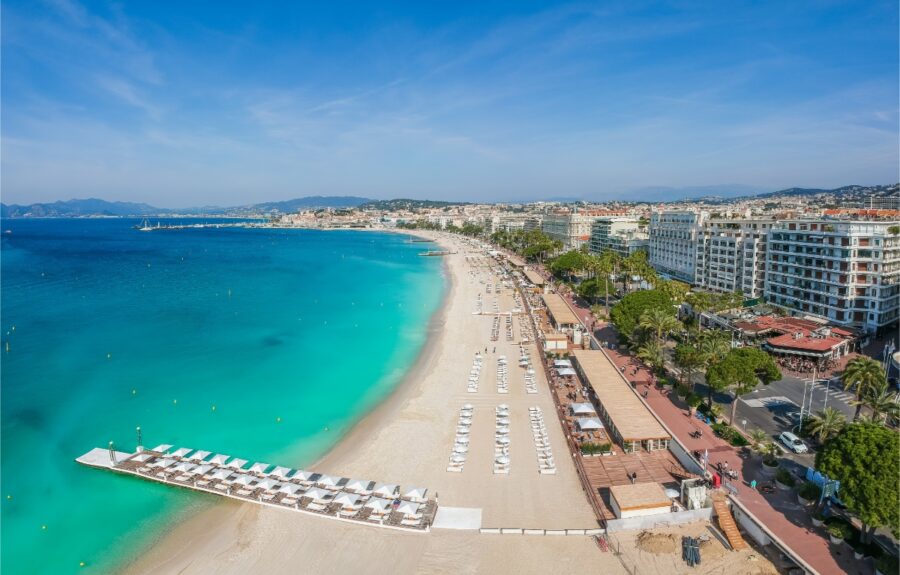
Cannes is the clear winner if you’re after traditional sandy beaches. The soft, golden sand makes it much more comfortable for sunbathing and building sandcastles with kids.
The beaches stretch along La Croisette, Cannes’ famous seafront boulevard. Unlike Nice, Cannes has installed helpful railings in some spots to make entering the water easier and safer.
Cannes offers a mix of public and private beaches. The private ones provide luxury amenities like comfortable loungers, bar service, and sometimes even massage services, though at premium prices. These beaches become celebrity hotspots and exclusive party venues during film festival season.
Water Sports and Relaxation
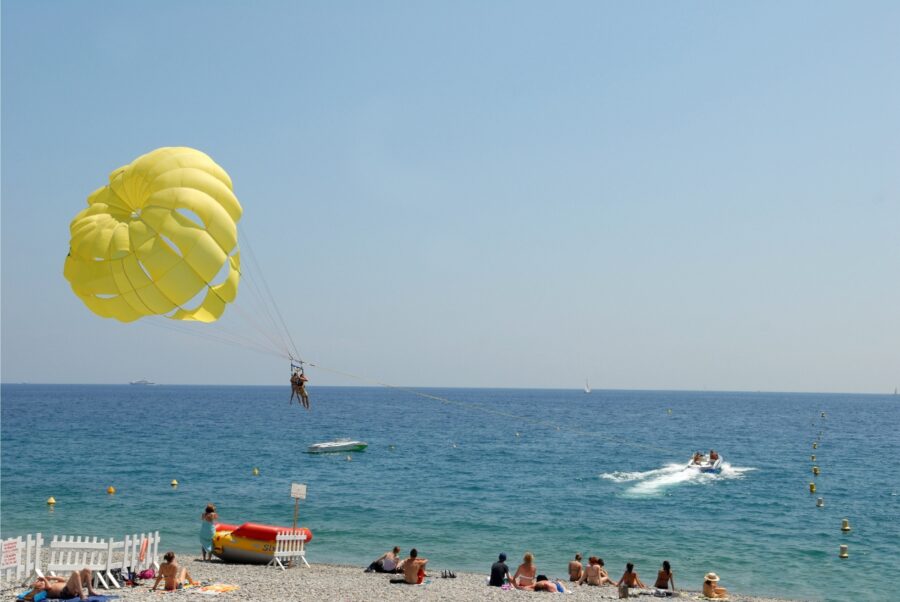
Both cities offer plenty of water activities, but cater to slightly different preferences. In Nice, the deeper water close to shore makes it excellent for swimming and snorkeling. The currents are generally mild, and several operators offer parasailing, jet ski rentals, and paddleboarding lessons.
Cannes provides a gentler entry into the Mediterranean, making it better for families with small children. Its beaches also tend to be better equipped with showers and changing rooms.
For profound relaxation, Cannes edges ahead with its beach clubs, which offer full-service experiences. You can spend an entire day pampered while gazing at luxury yachts bobbing in the blue Mediterranean.
Accommodation and Stays
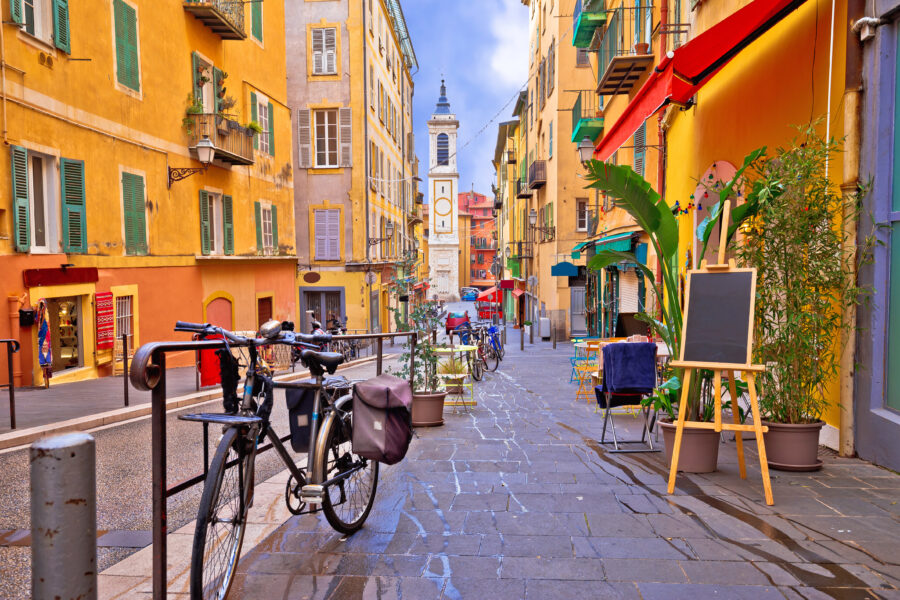
Where you stay can make or break your French Riviera experience. Both Nice and Cannes offer distinct accommodation options that reflect each city’s character.
Luxury Hotels and Boutique Options
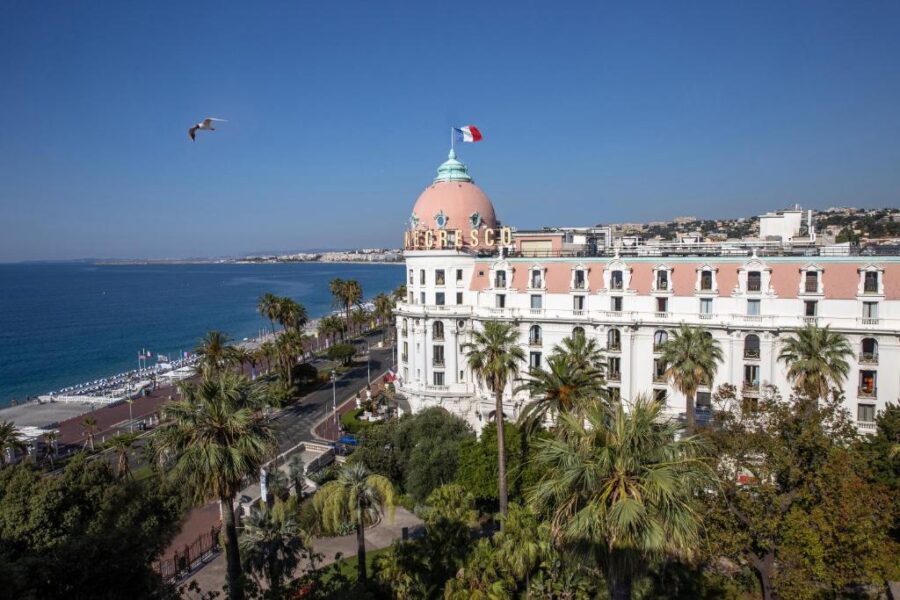
Nice boasts the iconic Hotel Negresco, a historic landmark with Belle Époque grandeur facing the Promenade des Anglais. This five-star hotel isn’t just a place to sleep—it’s a living museum with art spanning five centuries.
The city also features charming boutique hotels in the colorful Old Town (Vieux Nice), where converted townhouses offer character with modern amenities. These smaller establishments often provide more personalized service and a local atmosphere.
Cannes, unsurprisingly, brings out the ultimate luxury experience. The famous hotels along La Croisette, like the Carlton and Martinez, host celebrities during the film festival.
These palaces offer private beaches, Michelin-starred restaurants, and impeccable service. The boutique hotel scene in Cannes tends to be more polished and pricey than in Nice, reflecting the city’s more exclusive atmosphere.
Value for Money Stays
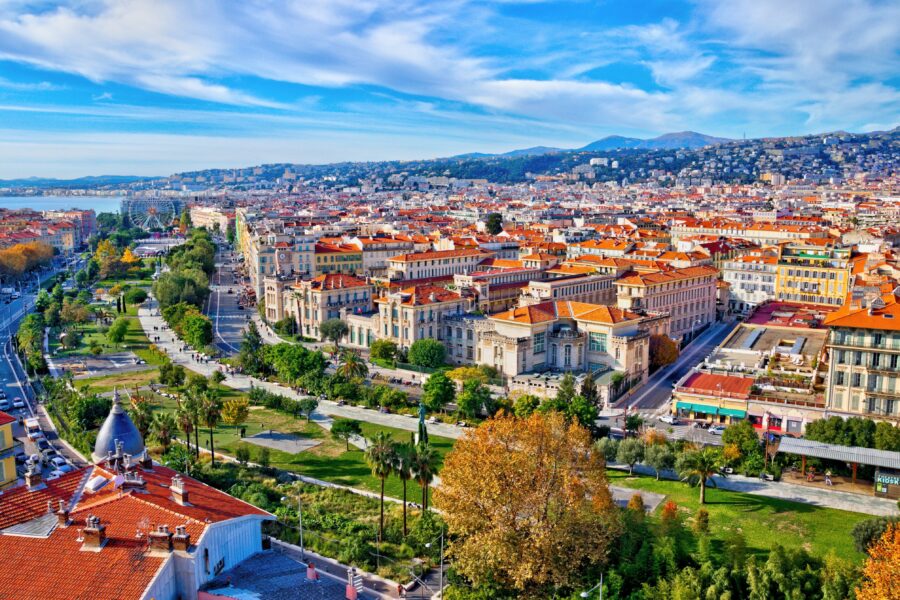
Nice is an excellent choice for budget-conscious travelers. The city offers numerous mid-range hotels, especially in the Jean-Médecin shopping district and around the train station. Many provide decent amenities at reasonable prices compared to neighboring resort towns.
Apartment rentals are plentiful in Nice, particularly in residential neighborhoods like Musiciens and Libération. These areas give you a taste of authentic local life while saving significant money.
Cannes can be challenging for budget travelers, especially during events. However, you’ll find more affordable options if you look beyond La Croisette to neighborhoods like La Bocca or Le Suquet (the old town). Off-season stays in Cannes (November-March) can offer surprising value, with luxury hotels sometimes cutting rates by 50% or more compared to peak summer prices.
Culinary Scene and Dining Experiences
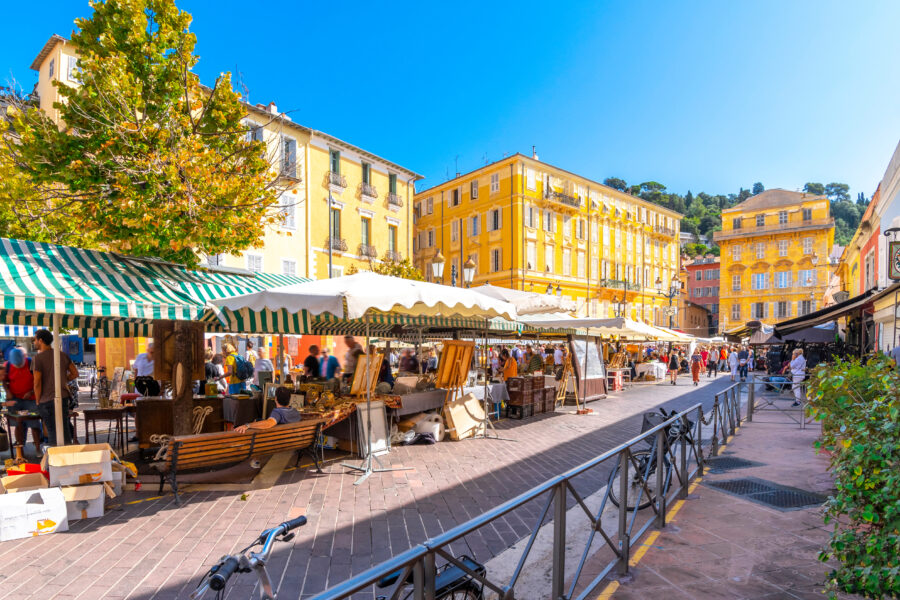
Both Nice and Cannes offer incredible food experiences that showcase the best of French Riviera cuisine. The dining scenes in these cities reflect their unique characters, with Nice offering more traditional Provençal fare while Cannes embraces international luxury.
High-End Restaurants and Local Delicacies

Cannes is synonymous with luxury dining. The city boasts numerous Michelin-starred restaurants where elite chefs create artistic culinary masterpieces. La Palme d’Or and Le Park 45 are standouts for travelers seeking exceptional fine dining experiences.
Nice’s high-end restaurant scene feels more authentically Provençal. The city embraces its Italian-influenced cuisine with pride. Local delicacies like socca (chickpea pancakes), pissaladière (onion tart), and salade niçoise can be found in elegant settings throughout Old Town.
Both cities excel for seafood lovers. Cannes restaurants often feature more elaborate presentations, while Nice offers fresher, simpler preparations that let the Mediterranean ingredients shine. Bouillabaisse and ratatouille taste different in each city, with Nice versions being more rustic and traditional.
Street Food and Casual Bites

Nice wins for casual dining and street food options. The Cours Saleya market is a food lover’s paradise where visitors can sample local produce, cheeses, olives, and ready-to-eat treats for reasonable prices.
Small family-run bistros in Nice offer incredible value with prix-fixe lunch menus that won’t break the bank. These spots often serve the most authentic regional dishes.
Cannes has fewer budget options but still offers delightful, casual experiences. Bakeries selling pan bagnat (Niçoise sandwich) and socca vendors can be found away from the main tourist areas.
For a quick bite, the Forville Market provides fresh local products in a less touristy atmosphere than Cannes’ high-end restaurants. Food trucks and casual cafés are more prevalent in Nice, making grabbing something while exploring the city’s attractions easier.
Nightlife and Entertainment
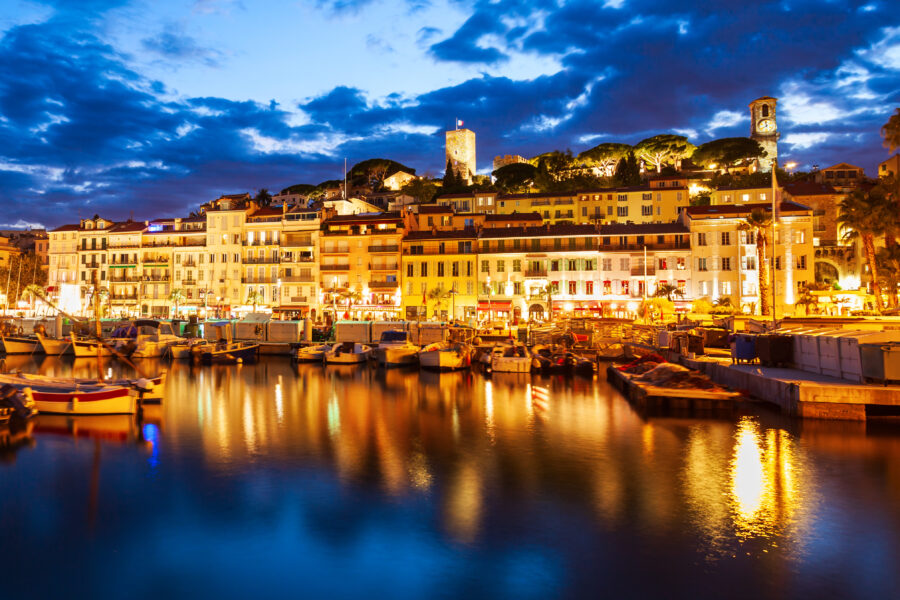
Cannes and Nice offer vibrant after-dark scenes catering to different tastes and budgets. Each city has its unique flavor when the sun goes down, with options ranging from upscale cocktail lounges to casual beachfront bars.
Clubbing and Bars in Cannes
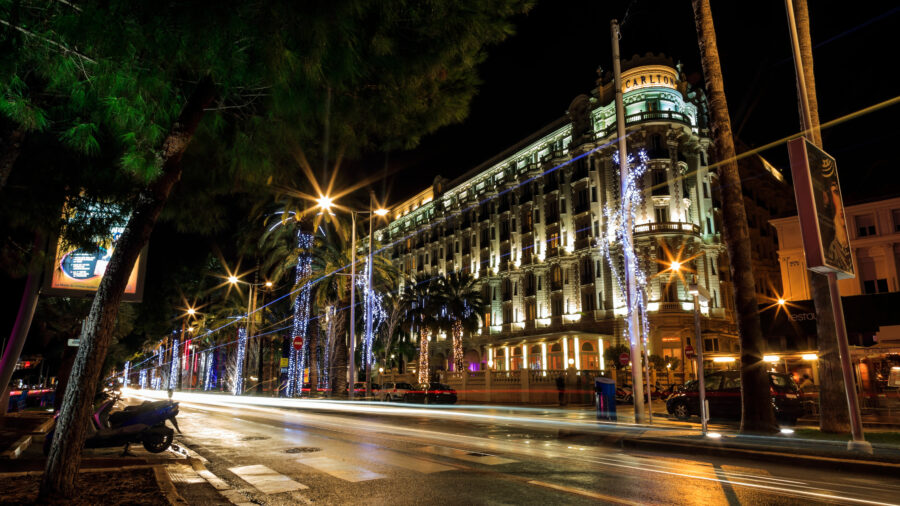
Cannes delivers a more exclusive nightlife experience, perfect for those seeking glamour and luxury. The city comes alive after dark with its high-end establishments along La Croisette Boulevard. Baôli and Gotha Club are among the hottest spots where you might rub shoulders with celebrities, especially during the film festival.
Beach clubs transform into party venues at sunset. Plage du Festival hosts fantastic DJ sets with Mediterranean views as your backdrop. For a more relaxed evening, the bars around Rue du Commandant André offer craft cocktails in stylish settings.
The casino scene also thrives here. Casino Barrière provides gaming tables and entertainment that attract both locals and tourists. Cover charges can be steep at the fancier venues, but the experience is typically worth the splurge.
Nice Evening Ambiance
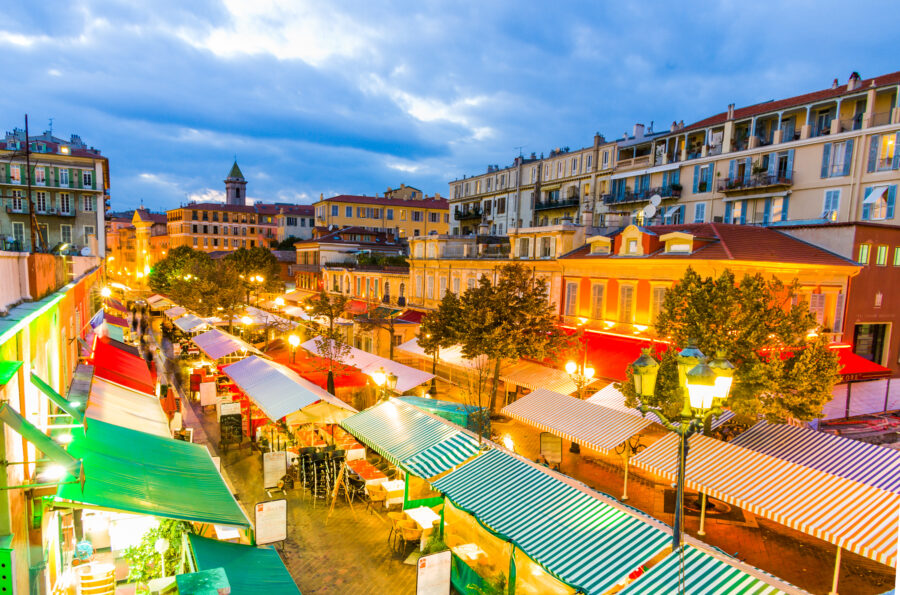
Nice boasts a more diverse and accessible nightlife scene. The Old Town (Vieux Nice) buzzes with energy as restaurants transition to evening mode and bars open their doors. Narrow streets fill with people enjoying drinks at outdoor tables.
Wayne’s Bar and Ma Nolan’s offer live music in casual settings, popular with tourists and locals. The atmosphere here is decidedly more laid-back than Cannes, with fewer velvet ropes and VIP sections.
For something uniquely Nice, check out the bars along Cours Saleya. These spots spill onto the street during summer, creating a festive ambiance. High Club near the Promenade des Anglais is the city’s largest nightclub, drawing international DJs.
Nice’s nightlife is more budget-friendly than Cannes’s, offering quality entertainment. The city also hosts seasonal events and festivals that enliven the evening scene throughout the year.
See Related: Game-Changing European Travel Strategies That Cut Costs by 40% While Maximizing Cultural Experiences
Transportation and Accessibility
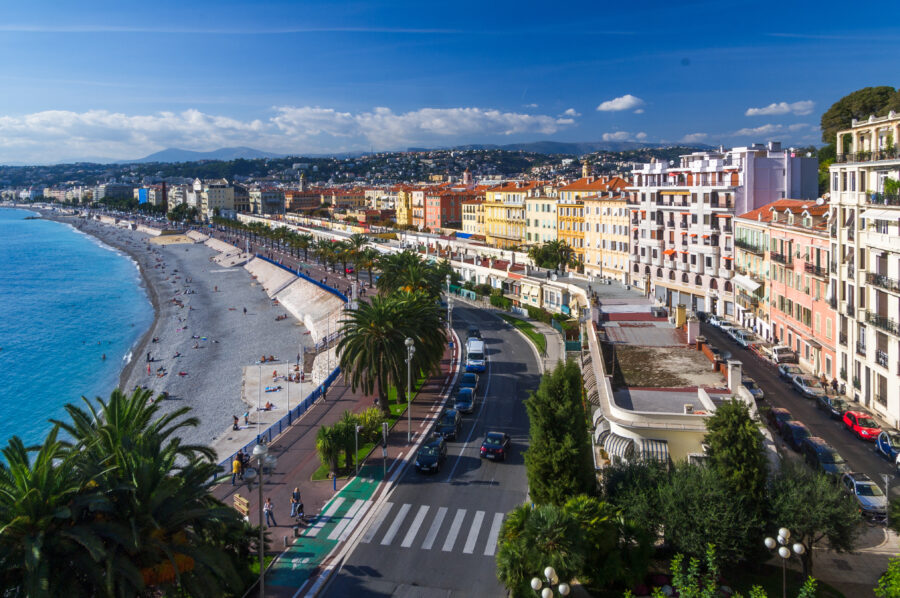
Getting around the French Riviera can make or break your vacation experience. Nice and Cannes offer different transportation options that cater to various traveler preferences and needs.
Public Transport and Walking Routes
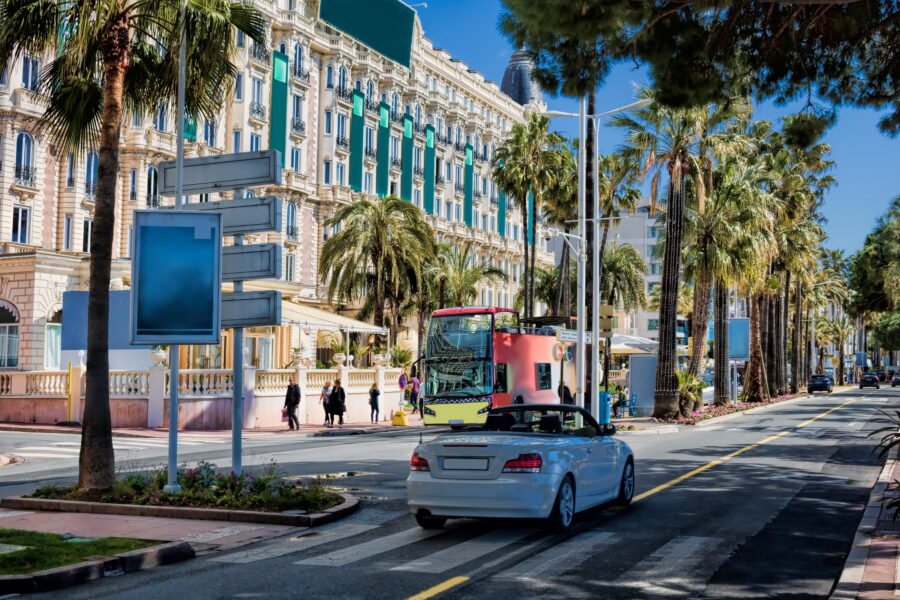
Nice boasts a comprehensive public transportation network that includes buses, trams, and trains. The city’s efficient tram system connects major attractions, making it easy to explore without a car. The central train station in Nice (Nice Ville) is centrally located and offers regular services to nearby towns.
Cannes has a more compact city center with its train station in the heart of town. This makes Cannes particularly convenient for travelers on foot. Many visitors appreciate that Cannes’ main attractions are within walking distance of each other – you can stroll from La Croisette to the Old Town in minutes.
Both cities offer scenic walking routes along their coastlines. Nice’s famous Promenade des Anglais stretches for 7 km, while Cannes’ La Croisette offers glamorous views of luxury yachts.
Car Rentals and Private Transfers
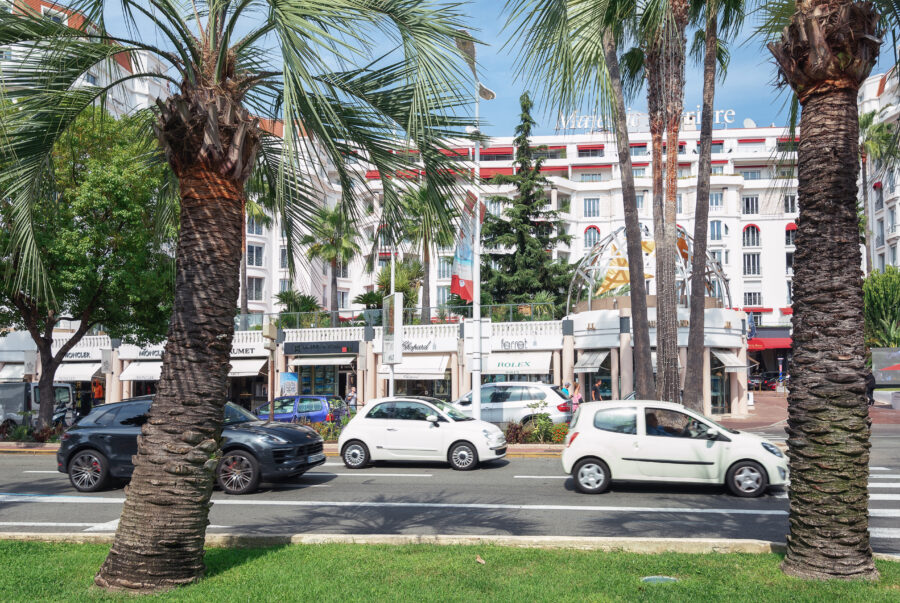
Renting a car allows you to explore the Riviera’s hidden gems, but it comes with challenges in both cities. Nice has more car rental options due to its international airport, but parking can be expensive and difficult to find in the city center.
Cannes offers fewer rental agencies, but driving can be less hectic than in Nice. Street parking is limited in both cities, so budget for garage fees if you’re renting.
Private transfers between cities cost around €80-120 one-way. Many travelers opt for transfers when arriving with luggage, then switch to public transport for day trips.
If you rent a car, the scenic coastal drive between Nice and Cannes along the Corniche roads offers breathtaking Mediterranean views. Taxis and rideshare services operate in both cities but are pricier than other European destinations.
Planning Your Itinerary

Planning how you’ll spend your time is crucial when deciding between Nice and Cannes. Both cities offer unique experiences that cater to different travel styles, whether you’re seeking cultural immersion or beach relaxation.
Cultural and Sightseeing Itineraries
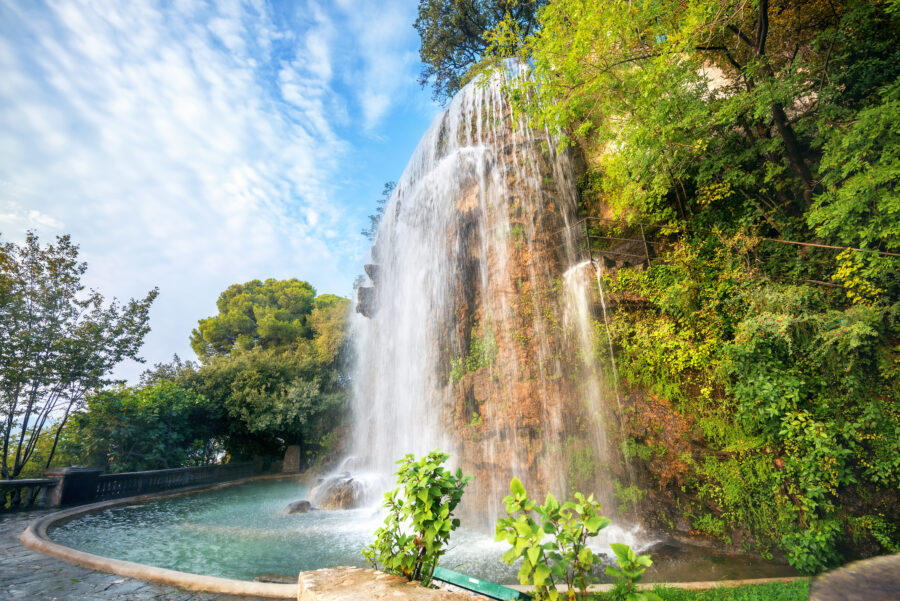
Nice shines as a cultural hub with its impressive museums and historic sites. Start your morning at the colorful Cours Saleya market, then head to the Museum of Modern Art (MAMAC) to view contemporary works.
In the afternoon, climb Castle Hill for panoramic views of the Baie des Anges. Don’t miss the Marc Chagall Museum’s biblical paintings – a highlight of any French Riviera visit.
For a day trip, hop on a short bus to medieval Eze village perched dramatically on a cliff. The exotic garden at the top offers stunning Mediterranean vistas.
Cannes offers various cultural attractions, including La Croisette promenade and the Film Festival Palace. To discover its history, take a guided walking tour of the Old Town (Le Suquet).
Consider a half-day excursion to Antibes to visit the Picasso Museum housed in Château Grimaldi. The ancient Roman artifacts at Fort Carré are worth exploring too.
Relaxation and Beach-Focused Trips
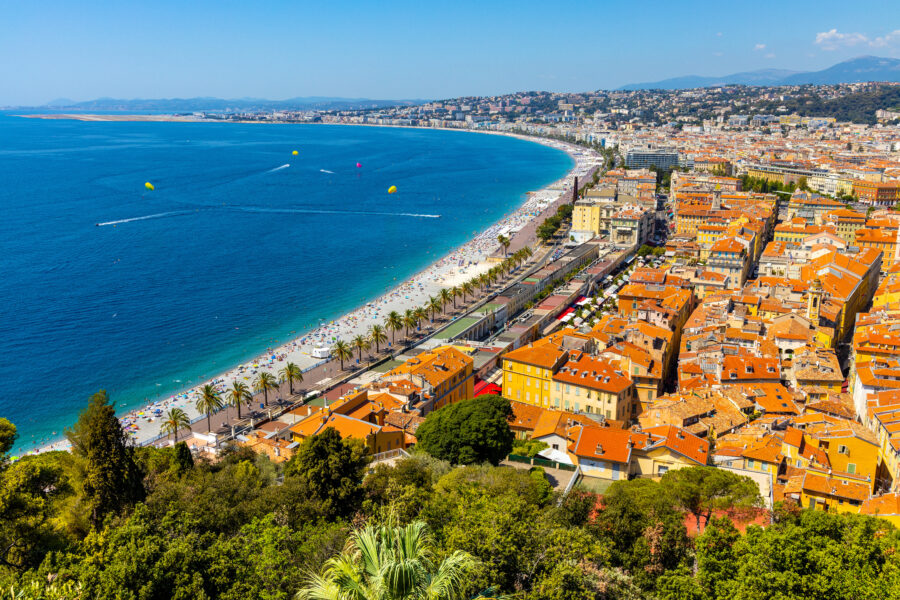
Cannes boasts superior sandy beaches compared to Nice’s pebbly shoreline. La Croisette public beaches offer better swimming conditions and soft sand. For a luxury experience, rent a lounger at one of the private beach clubs.
Take a ferry to Îles de Lérins for secluded swimming spots and peaceful pine forests. St. Marguerite Island has crystal-clear waters perfect for snorkeling.
The main beach in Nice runs along Promenade des Anglais. While rockier, many visitors bring padding or rent chairs. For better swimming, head to Villefranche-sur-Mer, just 10 minutes from Nice by train.
St. Tropez is an ambitious but doable day trip from either city if you crave that celebrity beach vibe—book excursions in advance during the summer months to avoid disappointment. Allow downtime between activities for a relaxing itinerary. Both cities shine in the early morning and evening, when temperatures are milder and crowds are thinner.
See Related: Bordeaux vs Lyon: Battle of France’s Top Wine Regions Revealed
Frequently Asked Questions
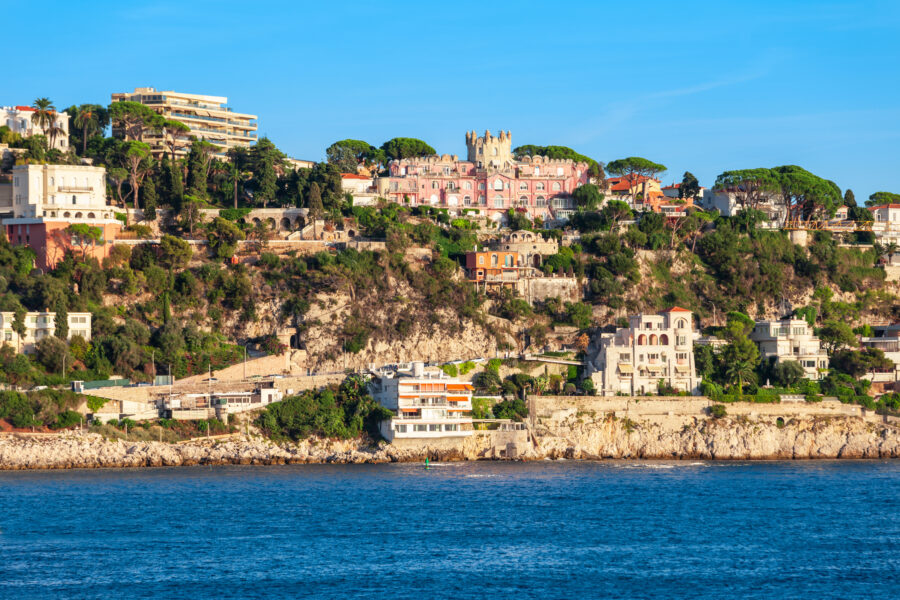
Visitors to the French Riviera often debate between Nice and Cannes for their Mediterranean getaway. These two gems offer different experiences, costs, and attractions that appeal to various types of travelers.
What distinguishes the nightlife experiences between Nice and Cannes?
Nice offers a more relaxed and diverse nightlife scene with options for different budgets. You’ll find everything from casual beach bars to sophisticated lounges in the Old Town area.
Cannes nightlife has a more exclusive feel, especially during festivals and events. The city is known for its upscale clubs along La Croisette, where you might spot celebrities during film festival season. Nice stays lively year-round, while Cannes’ nightlife scene intensifies during peak tourist seasons and major events.
How does the family-friendliness of Nice compare to that of Cannes for travelers with children?
Nice provides more family-friendly options with longer promenades, public parks, and kid-friendly museums like the Confiserie Florian candy factory tours. The pebble beaches might be tough for little ones, but there are designated family areas.
Cannes has sandy beaches that are more comfortable for children. The city also offers carnival rides along the waterfront and family-oriented water activities during the summer. Both cities have ice cream shops and casual dining options that welcome families, but Nice generally offers more affordable family activities.
What are the cost differences for tourists considering a stay in Nice versus Cannes?
Nice is notably more budget-friendly than Cannes. Hostel and hotel rooms in Nice average around €59 per night, while similar accommodations in Cannes cost approximately €75.
Dining in Nice offers more variety across price points, with affordable options in the Old Town. Cannes restaurants, particularly those near La Croisette, typically charge premium prices even for casual meals. Shopping, entertainment, and beach club access come with a higher price tag in Cannes, making Nice the better choice for budget-conscious travelers.
In terms of travel distances, how far apart are Nice and Cannes, and what are the best modes of transportation between them?
Nice and Cannes are approximately 33 kilometers (20 miles) apart along the Mediterranean coast. The train is the most popular transportation option, with the journey taking about 30 minutes and trains running regularly throughout the day.
Buses are a cheaper alternative. The #200 coastal route offers scenic views but takes about 45-60 minutes longer.
The fare is significantly less than the train ticket. Car rentals are available for those seeking flexibility, though parking can be challenging and expensive in both cities, especially during high season.
How do Nice and Cannes differ in their appeal to luxury travelers versus those seeking a cultural experience?
Cannes caters to luxury travelers with its designer boutiques, Michelin-starred restaurants, and prestigious hotels along La Croisette. The yacht-filled harbor showcases the city’s association with wealth and glamour.
Nice offers a richer cultural experience with numerous museums like the Matisse Museum, the Marc Chagall National Museum, and MAMAC. Its distinct neighborhoods reveal influences from Italian architecture and French history.
Luxury travelers can still find high-end experiences in Nice, particularly in the Cimiez neighborhood. In contrast, budget travelers can enjoy Cannes’ beauty by window shopping and walking along public beach sections.
In a Riviera itinerary, how could one decide between spending time in Nice, Cannes, or St. Tropez?
Due to its excellent transport connections and larger size, Nice is the best central base for exploring the French Riviera. It’s ideal for travelers interested in art, architecture, and authentic local cuisine.
Cannes makes sense for shorter stays focused on luxury experiences, beach time, and upscale dining. It’s also perfect during specific events like the Film Festival if you want to experience the excitement.
St. Tropez offers a more secluded, exclusive experience, but it is harder to reach without a car. Consider it a day trip or for those seeking celebrity spotting and ultra-luxury shopping in a more intimate setting.
